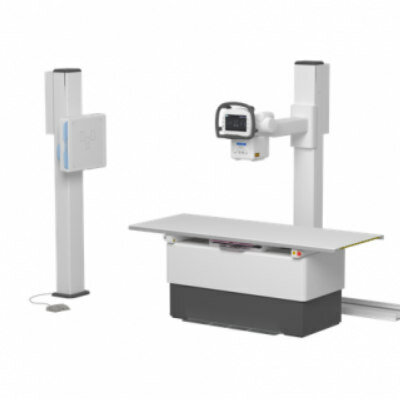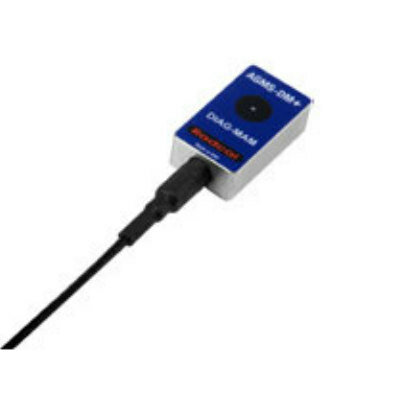Headset Reduces Loud, Unsettling MRI Noises
By MedImaging staff writers
Posted on 29 May 2008
For individuals undergoing a magnetic resonance image (MRI) exam, an experience many describe as stressful and uncomfortable, could soon become a bit more pleasant, because of a newly engineered headset. Posted on 29 May 2008
A group of engineering students from the University of Florida (UF; Gainesville, USA) has designed a headset that shows promise of reducing the extremely loud, repetitive, unsettling noises that accompany MRI examinations. The noises, which range from beeping to whirring to grinding and can frequently be as loud as a jet engine, derive from the workings of the powerful magnets at the heart of the machines' ability to generate sharply defined internal images of the body or body parts.
The headset would not only make the experience less annoying, it might also reduce the number of needed exams, freeing up the machine for access by more patients, according to Stephen Forguson, a senior majoring in electrical engineering. "The sound often makes patients move or wriggle a bit,” he said. "Unfortunately, that can blur the image, which means the operators have to redo the exam.”
Mr. Forguson, Chad Dailey, Paul Norris, and Christopher Ruesga, all engineering seniors, designed the headset as part of the College of Engineering's Integrated Product and Process Design Program. The program pairs student teams with corporate or government sponsors for yearlong design projects of products or processes intended to be useful to the sponsor. The sponsor of the headset project was Invivo Corp., a Gainesville manufacturer of magnetic coils, monitors, and other MRI accessories.
With battery-operated headphones that cancel internal airplane noise or other loud noises already commercially available, muffling the noise a patient hears when inserted into the cylinder-like MRI machines might seem a small challenge. However, the problem is that no electronics are permitted within the MRI chamber because the electronics can distort or disrupt the images scanned by the machines' magnets. Therefore, the difficulty for the UF students was figuring out how to reduce noise without the use of any wires, switches, or other electronics with the patient in the chamber.
Passive systems that use foam or other sound-deadening materials are insufficient to combat the noise. So the team attempted to solve the problem using existing "air phones,” or headphones attached to small tubes, connected via the tubes to specially engineered electronics and software located outside the MRI machine.
The air phones, which are similar to the headphones once distributed on commercial airplanes, pipe the sound via two tubes to tiny microphones connected to an amplifier and a signal processor several feet away. That processor taps an algorithm, or set of computer instructions, to produce a sound signal that is the opposite of the signal just received. That opposite signal then is piped back through a third tube to each of the patient's ears.
Because the MRI sounds are repetitive and the piped-in sounds are timed to occur on top of the repetitions, the result is that the patient hears the same sound, as he or she would have without any intervention, but at a lower volume.
Trials of the system using a loud beeping sound similar to some MRI noises demonstrated it could reduce the noise by as much as 15 decibels. Ambient noise is about 60 decibels, with jet engines and other extremely loud noises reaching 120 decibels. The students were only able to reduce actual MRI sounds by a smaller level, but they reported that further modifications of the system and algorithm are expected to improve that result.
The group's results are "significant and make a difference,” said Dr. Gijs Bosman, a professor of electrical and computer engineering and the team's faculty adviser. "Based on experiments and further testing of the prototype, the team has come up with several recommendations for further improvements.”
Sam Coons, a project manager with Invivo who worked with the UF team, noted that reducing the MRI noises is also difficult in part because as clinicians develop new scans, new noises emerge. However, he said that improving the algorithm at the heart of the headset project should make it more effective against the variety of noises.
The noise-muffling technology is "a big piece” of Invivo's entertainment system, according to Mr. Coons. "We hopefully at some point will incorporate this into all of our systems because noise is such a problem,” Mr. Coons said. "If we can achieve our goals, we will ship this to everyone.”
Related Links:
University of Florida
Invivo














